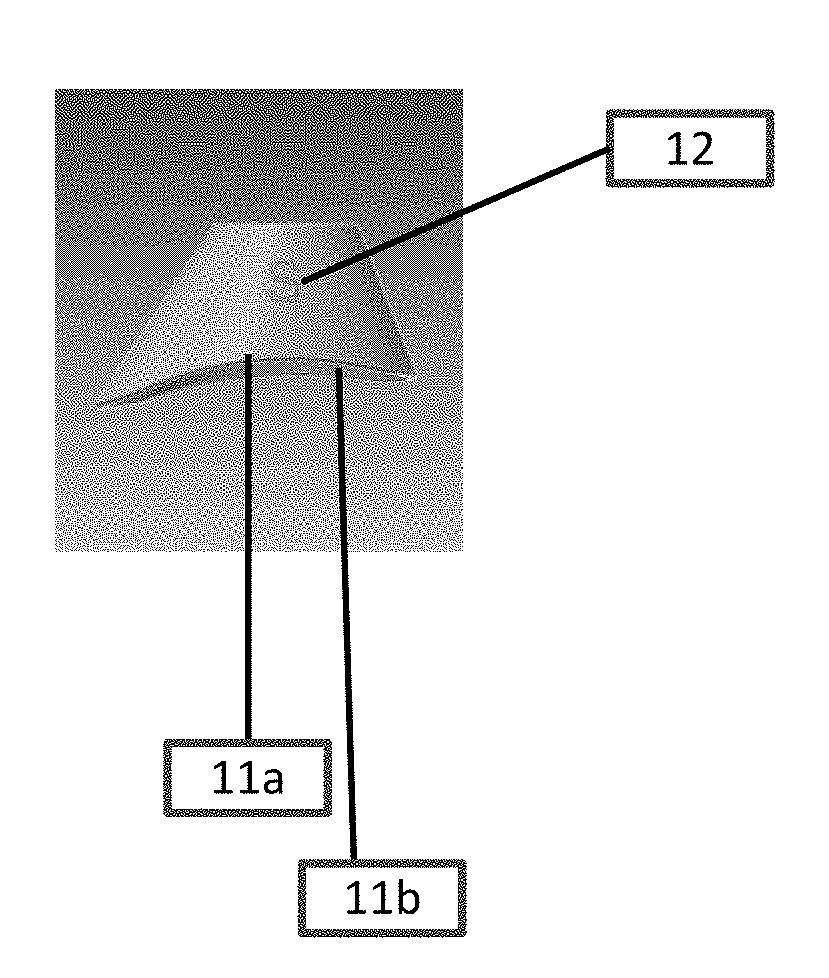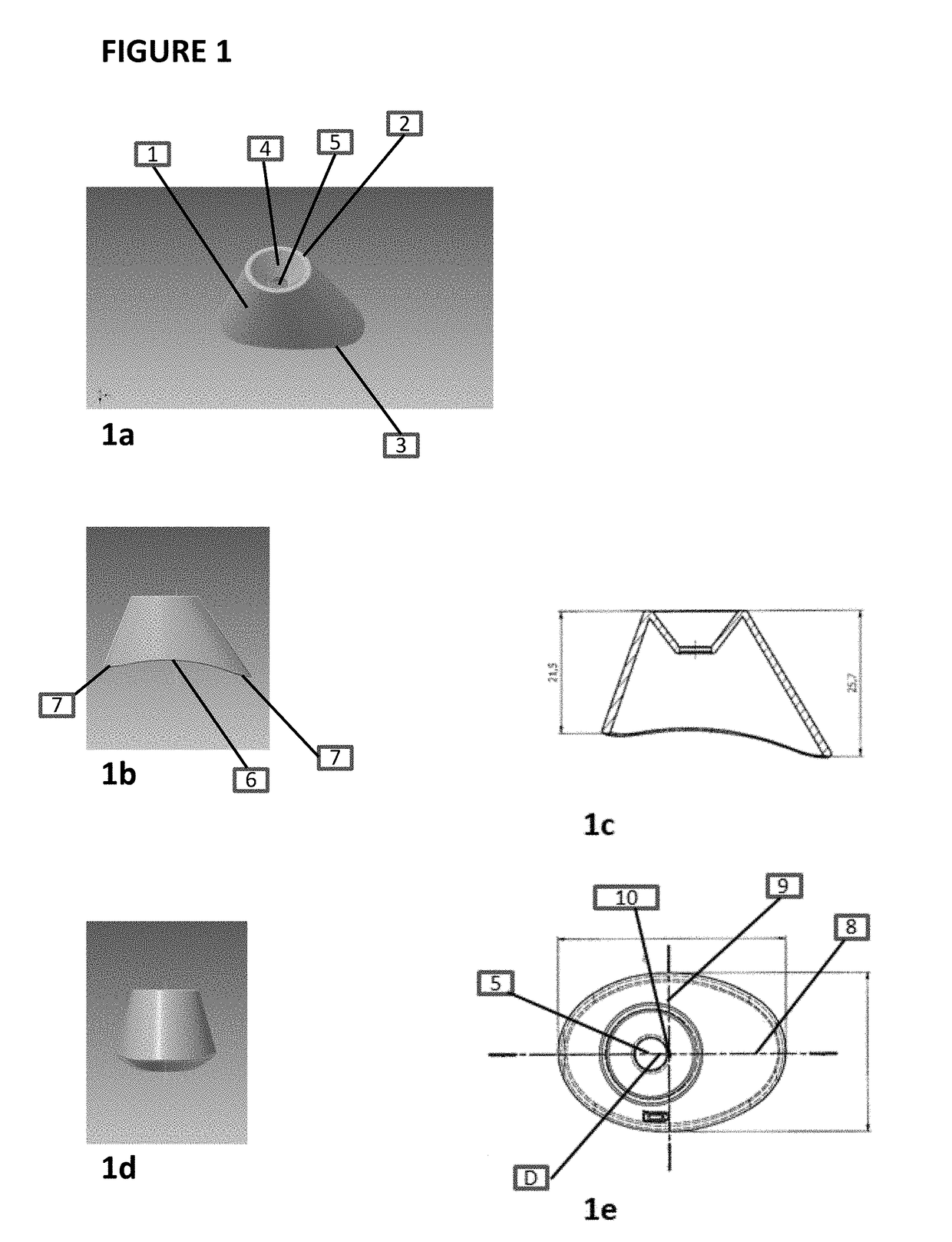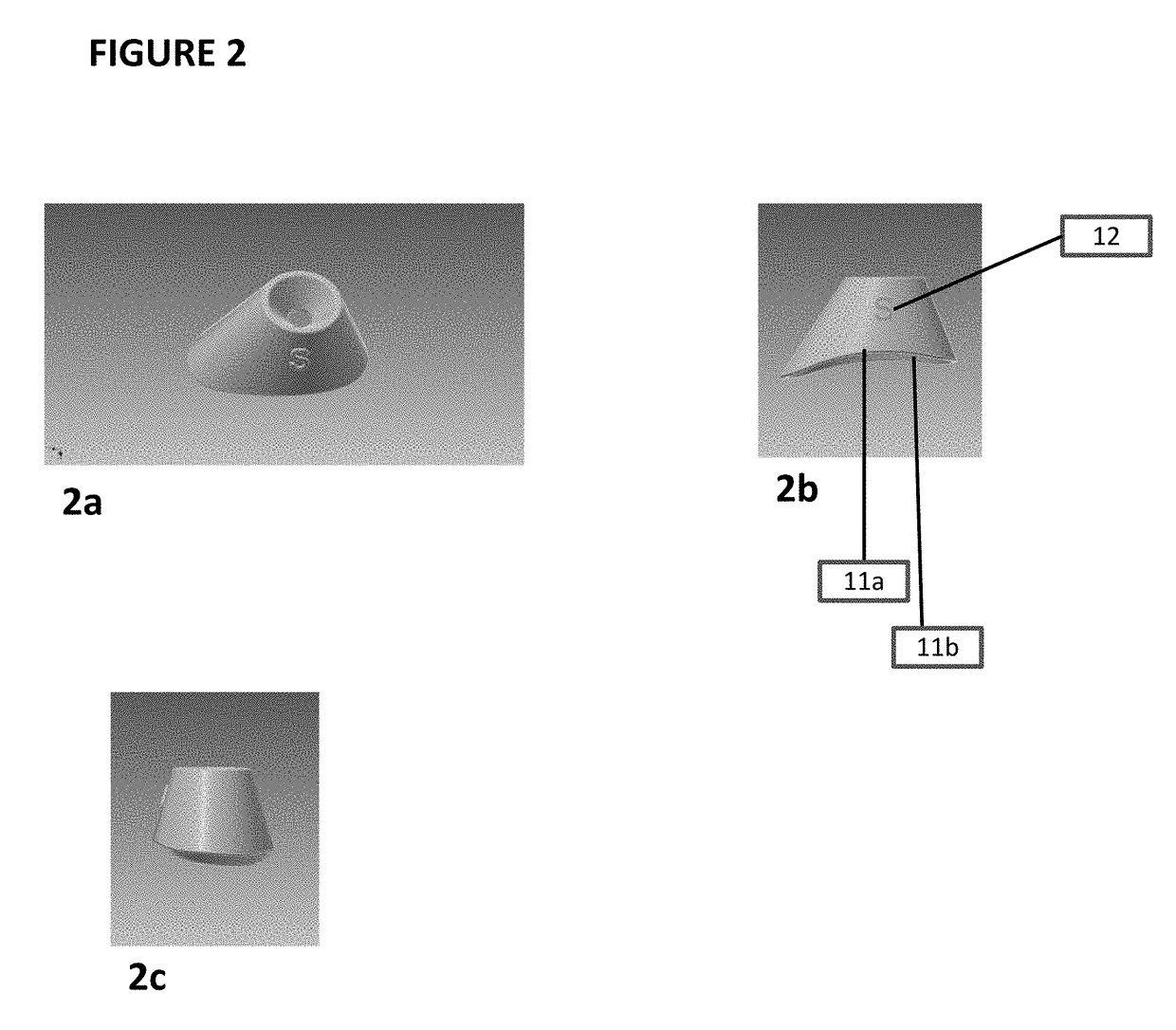Device for ocular administration of fluids
a fluid-based device and ocular technology, applied in the field of fluid-based devices for ocular administration, can solve the problems of high construction cost, difficult operation, and high risk of compression, traction or dislocation of the eyeball, and achieve the effect of low construction cost and high structural simplicity
- Summary
- Abstract
- Description
- Claims
- Application Information
AI Technical Summary
Benefits of technology
Problems solved by technology
Method used
Image
Examples
Embodiment Construction
[0020]The present invention relates to a device called an Eye Drop Aid (EDA) (1) for administering a fluid to the eye of a patient, having the shape of a hollow truncated cone, with a minor base (2) and a major base (3) where the major (bottom) base (3) has the shape of an ovoid and has a non-coplanar perimeter suitable for surrounding the periocular area of the patient and for matching its form; the minor (top) base (2) has a housing (4) for the dripper of a liquid dispenser, said housing having the shape of an inverted truncated cone with a hole (5) and being positioned so that, upon application of the major base (3) onto the eye, the hole lies vertically aligned with the center of the eye. During application, the tip of the dripper housed on the top minor base (2) remains spaced from the corneal surface, and the fluid administered from the dripper does not come into contact with the device. As further described, the device allows the distal part of the dripper (i.e. the part cont...
PUM
 Login to View More
Login to View More Abstract
Description
Claims
Application Information
 Login to View More
Login to View More - R&D
- Intellectual Property
- Life Sciences
- Materials
- Tech Scout
- Unparalleled Data Quality
- Higher Quality Content
- 60% Fewer Hallucinations
Browse by: Latest US Patents, China's latest patents, Technical Efficacy Thesaurus, Application Domain, Technology Topic, Popular Technical Reports.
© 2025 PatSnap. All rights reserved.Legal|Privacy policy|Modern Slavery Act Transparency Statement|Sitemap|About US| Contact US: help@patsnap.com



